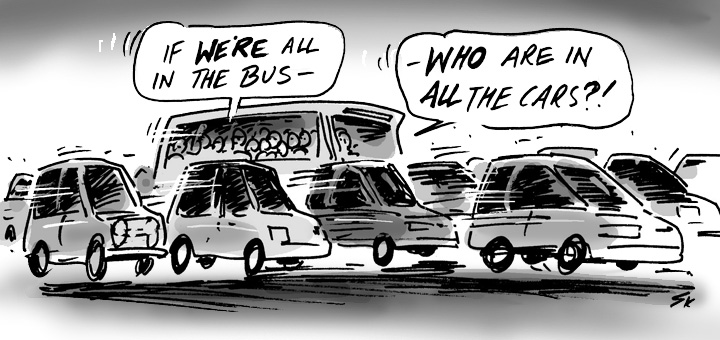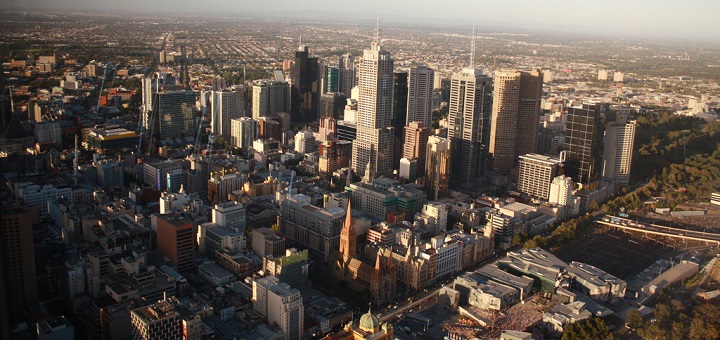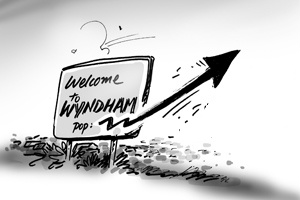Famously labelled by Australian artist Courtney Barnett, ‘Depreston’ echoes the sentiment of a larger issue plaguing the wider metropolitan area of Melbourne. Barnett sings of the juxtaposition of an area skyrocketing in value to become unaffordable for most, with houses in dire need of renovation or replacement and a very visible presence of crime (listen here). Her take on Preston, a formerly working-class middle ring suburb of Melbourne talks to housing patterns and trends being experienced across Melbourne.
Housing affordability
While housing affordability is a complex issue, one factor compounding the issue in Melbourne is the new-found desirability of established areas. People are no longer as willing to buy land on the fringe of the city and build a new house in a distant, new community. While housing in these areas might be cheap, residents will usually pay in other ways such as a lack of infrastructure and services, lengthy and costly commutes to work and potential social isolation as they leave family and friends behind in more established parts of the city.
Growing fringe
As Melbourne grows, livability is affected as the ‘fringe’ of the city becomes increasingly further out from jobs and services. This talks to the reason suburbs such as Preston have become so desirable to live; people are unwilling to give up their social networks, timely commutes to work and accessibility to services and transport. This collective cultural shift in the thinking of Melburnians is becoming the new norm in the consumption of housing. However, when coupled with record population growth, the trend creates unprecedented demand for housing and results in prices soaring to new levels.
Housing demand shifts
As such, many people are being priced out of Melbourne’s prevalent established dwelling stock of detached houses. Preston is an example of this – having multiple waves of growth during the 1920’s and again in the 1940’s and 50’s, the predominant type of dwelling constructed was detached housing, which is now largely unaffordable. Even with detached housing in the area becoming relatively unaffordable, demand for housing in the area does not cease. Instead, demand shifts towards higher density townhouse and apartment living, as people start to sacrifice space in return for accessibility and community. This trend is occurring across Melbourne, with the amount of development in established areas now greater than that on the fringe in Greenfield areas.
Established demand
This desire to live in established, well-serviced areas resulted in a boom in apartment, townhouse and unit development in Melbourne. Preston peaked in population around the 1990s and since plateaued, however, around the mid-2000s started growing in population again, a likely from an upswing in small-scale unit development.
From around 2010, the scale of development started to change. While multi-unit development is still occurring (albeit at a larger scale), large apartment and townhouse blocks are now appearing en masse. A prime example of this would be the ‘Preston Junction’ Precinct, located in the southern part of Preston, where Plenty Road begins at the border of Thornbury and south of Bell Street. This area formerly had large parcels of underutilised industrial land that has become increasingly valuable due to its location and access to transport and services. Combined with progressive council strategic policy that encourages and guides higher density redevelopment, this has resulted in a surge of new development, as can be seen in street view images below.
Street view looking north from High Street to where High Street and Plenty road diverge – December 2009 and March 2017
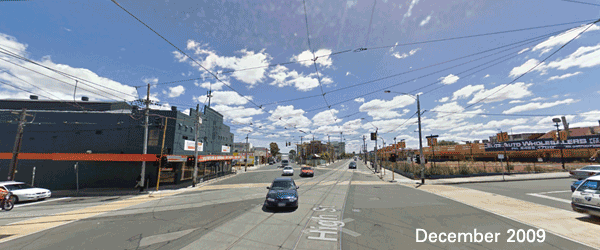
The stark contrast between the images shows how drastic this change has been in a relatively short amount of time. You may also notice the large crane in the background of the March 2017 image, indicating that change is the new constant.
Monitoring development patterns
You might be wondering how we know all about housing development patterns being that we work in the realm of demographics and population forecasting. As we develop and update our population forecasts, we track development to monitor net gains in dwellings to help us understand and forecast development supply, which will house the future population. This is quite an involved process, as we track discrete parcels of development to ‘ground truth’ our forecast assumptions and correlate our future dwelling supply with actual land supply.
To track this level of development detail, we’ve created an Urban Development Layer (UDL), which tracks development parcels spatially and over time.
Urban development layer – Preston 2011 to 2017
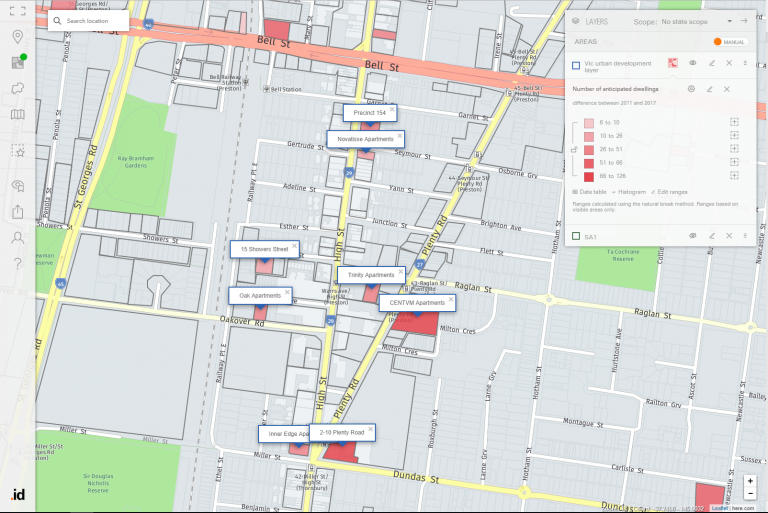
The UDL shows an increase of 458 dwellings in the Preston Junction through major sites alone, with most being large apartment buildings. This growth trend is expected to continue and increase in momentum, with approximately 870 dwellings identified for completion in the following 6-year period, almost double that of the current period.
What does this mean for Preston?
The new development will hopefully achieve greater housing choice and affordability, meaning people who still want to stay around the Preston area will have a more diverse range of dwellings at their disposal at a variety of price points. This will also potentially help renters, as the greater supply of dwellings helps put downward pressure on prices.
A more physical aspect of the growth in development is a large amount of taller buildings in a formerly low rise industrial area. As almost all new higher density development is planned with retail at the ground level, this can have a positive impact as new cafes and shops are able to move into the area and contribute to a vibrant public life at the street level. Hopefully, this will emulate the success and feel of the existing High Street, acting as a new extension to a thriving precinct.
This is only a small example of the rapid changes we are seeing as we develop our population forecasts. Similar stories are playing out across metropolitan Melbourne in response to rapid population growth and shifting demographic demands from an evolving population base.
.id is a team of demographers, population forecasters, spatial planners, urban economists, IT and data experts who use a unique combination of online information applications and consulting services to help governments and organisations understand people and places for evidence-based planning.



